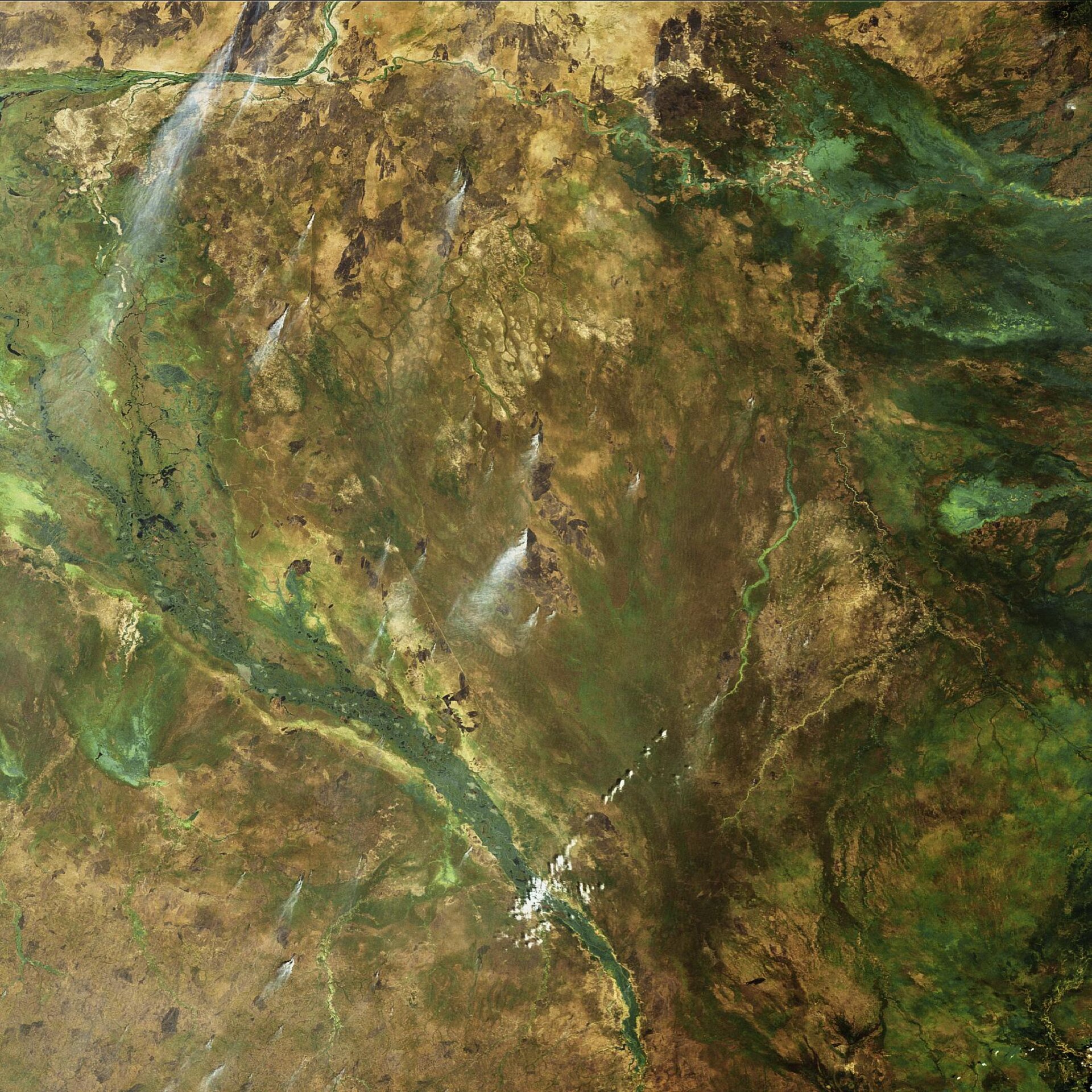Earth from Space: Fires and floodplains
Numerous smoke plumes from burning fires are shown over southern Sudan in this Envisat image. Although the cause of these fires is unknown, agricultural fires in the region are common this time of year because the dry season begins in November. Deliberate fires are often set to burn out papyrus plants so grass can grow and feed livestock.
The Sudd (the lush green area running from the top left to the bottom centre of the image) is a network of channels, lakes and swamps. The size of France, it is one of Africa’s largest floodplains and provides watering and feeding grounds for many endemic mammals and birds as well as for large populations of migratory species.
The Sudd is created by the White Nile, which along with the Blue Nile forms the world’s longest river – the Nile. The White Nile, also known in various sections as the Bahr-el-Abiad, Bahr-el-Jebel, Albert Nile and Victoria Nile, rises in the headwaters of Lake Victoria and runs through Uganda before entering Sudan and creating the Sudd. The Blue and White Nile Rivers come together in the north at Khartoum, Sudan's principal agricultural area.
For thousands of years the source of the Nile remained a mystery despite extensive efforts by the Greeks and Romans to locate it. The Sudd played a major role in keeping the origins of the Nile a mystery because explorers were not able to navigate through its swampy marshes. In 1858 British explorer John Hanning Speke became the first European to identify Lake Victoria as the Nile’s source.
Plans for the White Nile to bypass the Sudd to allow more water to reach the river downstream in the deserts of northern Sudan and Egypt resulted in the Jonglei canal. Construction began on the canal in 1978 but was suspended in 1983. Many conservation groups oppose the canal saying it will be disadvantageous to the area’s indigenous tribes and wildlife.
This image was acquired on 11 December 2006 by Envisat’s Medium Resolution Imaging Spectrometer (MERIS) instrument while working in Full Resolution mode.






